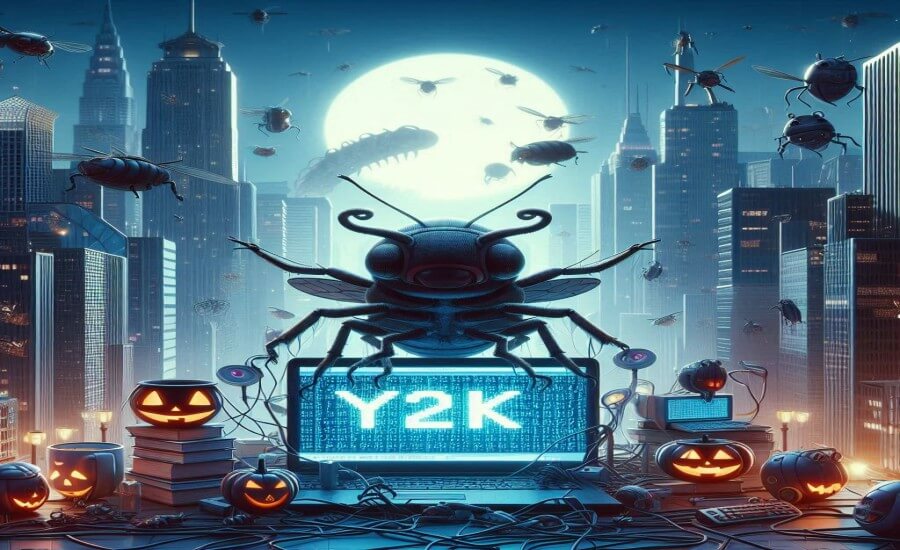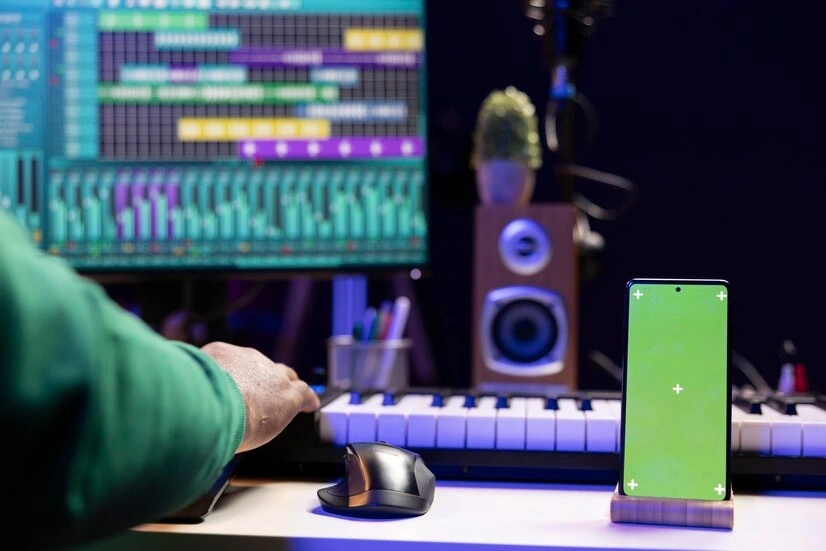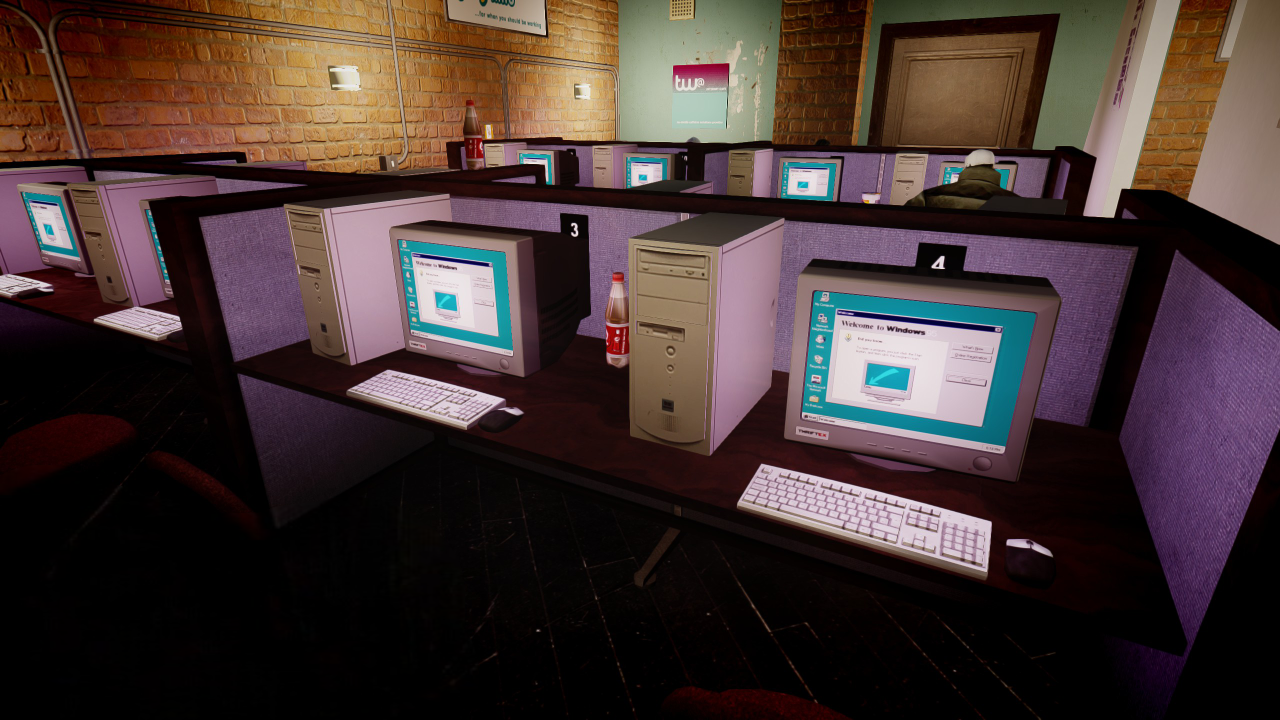Imagine the scene: Las Vegas, sometime in the 1990s. A cavernous convention center, packed shoulder-to-shoulder with tens of thousands of people. The air hums with anticipation, a cacophony of competing announcements, whirring hardware demos, and relentless marketing pitches. Flashing lights from elaborate, multi-story booths catch your eye. CEOs give bombastic keynote speeches, unveiling the "next big thing" to a frenzy of flashing camera bulbs from the world's tech press. This wasn't just a conference; it was COMDEX, the heart of the PC revolution, a place where hardware met hype on an epic scale. You are there, experiencing the peak spectacle of the tech trade show.
Tech trade show history: Industry Insiders Assemble (Pre-1980s)

Before the massive hype machines, tech trade shows were more modest affairs. Emerging in the mid-20th century, these gatherings served a practical purpose: connecting manufacturers of electronics components, computers, and peripherals with distributors, retailers, and industry analysts. They were primarily business-to-business (B2B) events, places to see new components, discuss partnerships, and write orders.
The Consumer Electronics Show (CES), arguably the most enduring of the giants, held its first event in New York City in 1967. It was a spin-off from a music show and featured early consumer gadgets like transistor radios and TVs with integrated circuits. Attendance was measured in the thousands, not hundreds of thousands. These early shows were about showcasing products to people in the industry, not necessarily generating widespread consumer excitement.
Show Spotlight: Early CES (1967 onwards)
-
Focus: Primarily B2B, showcasing new consumer electronics products to retailers and distributors.
-
Scale: Started relatively small (17,500 attendees, ~200 exhibitors in 1967).
-
Purpose: Industry networking, deal-making, showcasing technological progress within the trade.
Parallel Developments
Mainframe computers dominated business. The integrated circuit was revolutionizing electronics. The personal computer was still a hobbyist dream. The concept of "consumer technology" as a mass market was just beginning to form.
User Experience Snapshot
Attending these early shows meant being part of the industry. You were there to see the latest innovations in components, discuss distribution deals, or report on industry trends for trade publications. It was about business and technical progress, not flashy consumer reveals.
The Breakthrough Years: The PC Boom & COMDEX Reigns (1980s - Early 1990s)

The personal computer revolution changed everything, and tech trade shows changed with it. Launched in 1979 in Las Vegas, COMDEX (Computer Dealers' Exposition) rapidly became the epicenter of the booming PC industry. Held each November, it grew exponentially throughout the 80s and early 90s, attracting hundreds of thousands of attendees and thousands of exhibitors.
COMDEX was the place to be if you were involved in PCs. Major hardware and software announcements happened there. Microsoft launched Windows versions, Intel debuted new processors, and countless hardware startups made their name (or faded away) on the chaotic show floor. It was still heavily industry-focused, but its sheer scale and the importance of the products being unveiled started generating significant media attention, spilling over into mainstream awareness. Getting deals done, forging partnerships, and gauging the industry's direction were paramount.
Show Spotlight: COMDEX (Computer Dealers' Exposition, 1979-2003)
-
Dominance: The undisputed king of PC industry trade shows during the 1980s and 1990s.
-
Scale: Grew to massive proportions, filling multiple Las Vegas convention centers and hotels, peaking at over 200,000 attendees.
-
Focus: Initially distributors/dealers, expanded to encompass the entire PC ecosystem – hardware, software, peripherals, networking. Key launch platform for major innovations.
Milestone Markers
-
1979: First COMDEX held in Las Vegas.
-
1981: IBM PC launches, fueling the industry COMDEX serves.
-
1982: Bill Gates sees Visi On demo at COMDEX, inspiring Windows development.
-
Late 80s/Early 90s: COMDEX becomes a mandatory pilgrimage for anyone serious about the PC business.
User Experience Snapshot
Imagine navigating miles of aisles packed with booths showcasing everything from motherboards to modems to the latest spreadsheet software. The noise level was intense. Deals were being struck in hushed corners and loud boardrooms. Keynotes by industry titans like Bill Gates set the agenda for the coming year. It was overwhelming, exhausting, and absolutely essential for business.
The Refinement Period: Peak Hype and Gaming's Grand Stage (Mid-Late 1990s)
By the mid-90s, tech trade shows had evolved into major media events, designed not just for industry deals but also to generate consumer buzz. COMDEX remained massive, but perhaps less focused as the industry broadened. CES cemented its role as the premier showcase for consumer electronics beyond the PC – VCRs, CD players, early HDTVs had all debuted there.
The most significant development was the birth of the Electronic Entertainment Expo (E3) in 1995. Frustrated with being secondary attractions at shows like CES, the video game industry created its own dedicated event. E3 quickly became a lavish spectacle, featuring massive booths, loud music, celebrity appearances, and, most importantly, blockbuster game reveals and console launch announcements (PlayStation, N64, Dreamcast all had major E3 moments). The hype generated by E3 keynotes and trailers became a defining part of the gaming calendar. This era also saw the rise (and subsequent criticism) of "booth babes" – models hired to attract attention to booths, a practice reflecting the often male-dominated atmosphere of the time.
Show Spotlight: E3 (Electronic Entertainment Expo, 1995-2023)
-
Focus: Exclusively on the video game industry – hardware, software, accessories.
-
Atmosphere: Known for its high energy, elaborate booths, major press conferences, and intense media hype surrounding game reveals.
-
Impact: Became the most important annual event for game announcements and industry networking for nearly three decades.
Cultural Context Image Suggestion: A (tastefully chosen) image illustrating the "booth babe" phenomenon, perhaps contrasted with modern diverse booth staff, to highlight the cultural shift.
Price Point Perspective
Exhibiting at these massive shows became incredibly expensive, requiring elaborate booth designs, staffing, travel, and marketing budgets often running into millions of dollars for major companies. The pressure to make a big splash was immense.
User Experience Snapshot
For attendees, it was sensory overload – navigating dense crowds, enduring long lines for demos, collecting swag. For those following remotely (via magazines, early websites, or later, webcasts), it was about eagerly anticipating the big announcements from Sony, Nintendo, Sega, or Microsoft, dissecting trailers, and fueling the hype cycle.
The Revolution: Internet Disruption & Shifting Sands (Early 2000s - Late 2010s)
![]()
The turn of the millennium brought significant disruption. The dot-com bust severely impacted the tech industry, contributing to the rapid decline and eventual collapse of COMDEX (its last show was in 2003). Why did it fail? The internet provided instant news and product information, diminishing the value of waiting for a big show reveal. The sheer scale had made it unwieldy and expensive. Major companies realized they could get more focused attention (and control the message better) through their own dedicated launch events.
Apple's highly polished keynotes under Steve Jobs became the gold standard for product launches, bypassing traditional trade shows entirely. Other companies followed suit, creating their own developer conferences (like WWDC, Google I/O, Microsoft Build) that doubled as major announcement platforms. While generalist shows like CES adapted and remained huge by shifting focus (mobile, IoT, automotive tech, startups), and specialized shows like Mobile World Congress (MWC) thrived, the era of a single, dominant, all-encompassing tech show like COMDEX was over. E3 also began facing challenges as major publishers like EA started holding parallel events or skipping the show floor.
Show Spotlight: The Decline of COMDEX / Rise of Direct Events
-
COMDEX Failure Factors: Dot-com bust impact, unwieldy size/cost, internet providing instant news, major vendors pulling out in favor of own events or smaller shows.
-
Direct Event Trend: Companies like Apple, Google, Microsoft gain more control over messaging, timing, and audience by hosting their own launch events and developer conferences.
Parallel Developments
Broadband internet becomes widespread. Tech blogs and news sites provide real-time coverage. Live streaming allows keynotes to reach global audiences directly. Social media amplifies announcements instantly.
User Experience Snapshot
You no longer had to wait for COMDEX reports in magazines to hear about new products. News spread instantly online. You could watch keynotes live from home. Attending massive shows felt less essential for staying informed, though still valuable for networking or hands-on experiences. The hype cycle became more continuous, driven by company-specific events throughout the year.
The Modern Landscape: Hybrid Realities & Questioned ROI (Late 2010s - Present (2025))
The late 2010s and early 2020s brought further transformation, accelerated dramatically by the COVID-19 pandemic. Physical events were cancelled or postponed, forcing a rapid pivot to virtual and hybrid formats. While initially a necessity, elements of this model have persisted. Major shows like CES and MWC now routinely offer digital components, expanding their reach globally – allowing tech enthusiasts and professionals in places like Vadodara, India, to participate remotely.
However, the fundamental value proposition of giant, generalist trade shows continues to be questioned. Exhibiting costs remain high, environmental impacts are scrutinized, and many companies find targeted digital marketing or smaller, focused events yield better ROI. The definitive cancellation of E3 in December 2023, after several years of pandemic-related struggles and publisher withdrawals, marked the end of an era for gaming-specific mega-shows.
Today (in 2025), shows like CES, MWC, and Computex continue, adapting with hybrid models and focusing on specific industry sectors (AI, automotive, mobile, components). They remain important for networking, deal-making, and showcasing certain types of innovation, but they no longer hold the exclusive power over product launches and hype cycles they once did. The landscape is more fragmented, with a mix of large hybrid shows, company-direct events, developer conferences, virtual launches, and potentially growing regional tech events catering to specific markets.
Show Spotlight: Hybrid & Virtual Events
-
Trigger: Accelerated by the COVID-19 pandemic.
-
Format: Combines in-person attendance with online streaming, virtual booths, and digital networking features.
-
Impact: Increases accessibility and global reach but can dilute the impact and serendipity of purely physical events. Now a standard component of many major shows.
Industry Voice
Analysts debate the long-term ROI of massive physical shows versus more targeted or digital approaches. Exhibitors weigh costs against lead generation and brand visibility in a changed landscape.
User Experience Snapshot
Attending a major show might involve choosing between the full sensory experience in person (if feasible) or accessing keynotes and sessions online. Following tech news involves tracking a calendar of diverse events – large shows, company keynotes, virtual announcements – rather than focusing on one or two mega-events per year.
Full Circle Reflections
Tech trade shows began as essential B2B meeting grounds, crucial for building the industry. They morphed into extravagant spectacles driving consumer hype during periods of explosive growth like the PC and early internet eras. Now, disrupted by the very technologies they showcased – the internet, mobile connectivity, virtual communication – they are evolving again. The journey reflects the tech industry itself: from niche beginnings, through periods of centralized dominance, to a more fragmented, digital-first, and globally accessible reality.
The Legacy Continues
Trade shows like CES, COMDEX, and E3 were instrumental in shaping the narrative of technological progress. They dictated product launch cycles, fueled tech journalism, created intense industry buzz, and provided (for better or worse) iconic cultural moments. While their format and influence have changed, the fundamental need for industry players to connect, showcase innovation, and generate excitement – whether in a giant hall in Vegas, a slick virtual presentation, or a targeted regional event – endures.
FAQ: Trade Show Trivia
-
What was the first major tech trade show?
While smaller, specialized gatherings existed earlier, the Consumer Electronics Show (CES), started in 1967, is one of the oldest and most enduring large-scale tech trade shows. COMDEX, started in 1979, became hugely influential specifically for the PC industry.
-
What was COMDEX, and why did it fail?
COMDEX was the dominant computer industry trade show from the 1980s to early 2000s. It failed due to several factors: the dot-com bust hurting exhibitors, its massive size becoming unwieldy and expensive, the internet providing instant news (reducing the need for show-floor reveals), and major companies pulling out to host their own events. Its last show was in 2003.
-
What is CES?
CES (Consumer Electronics Show) is a massive annual trade show held in Las Vegas, showcasing the latest innovations in consumer technology, including TVs, audio, automotive tech, smart home devices, AI, robotics, and more. It started in 1967 and continues today, often incorporating hybrid virtual elements.
-
Why did E3 (Electronic Entertainment Expo) end?
E3, the major video game trade show, ended officially in December 2023. Its decline was due to multiple factors, including the high costs for exhibitors, major publishers opting for their own direct digital showcases (like Nintendo Direct, State of Play), pandemic-related disruptions accelerating this trend, and diminishing perceived ROI compared to direct online engagement with fans.
-
Are large tech trade shows still relevant in 2025?
Their relevance has shifted. While they are no longer the only major platform for product launches, large shows like CES and MWC remain important for industry networking, B2B deals, discovering startups, showcasing certain types of hardware innovation (e.g., automotive tech at CES), and setting industry agendas. Hybrid models have increased their reach, but their overall necessity compared to direct digital strategies is debated.
-
What has replaced the traditional big tech trade show model?
The landscape is now more diverse. It includes: large hybrid shows (CES, MWC), company-specific launch events (Apple Events, Google I/O), developer conferences, targeted industry-specific shows, regional tech events, and purely digital product announcements via live streams and press releases.





